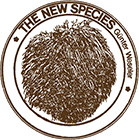ATEMOBJEKTE
Some twenty-two years ago, in 1964, I began my first works based on the phenomenon of breathing. At the time this was a question of music: breaths were translated into music, my so-called "Atemmusiken" or Breath Music, in which either the rhythmical element of breath as it was drawn in or expelled was formally defined for a performance of music (a piece using the organ: the rhythm was played with the so-called expression pedal, an instrument that allows the musical structure to change constantly through the continual swelling and diminution of the strength of the sound); or else there were changed various tones of breathing employed for playing an octet of wind instruments, such as the flow of exhalation, puffs and flutings on various instruments, reeds, and mouthpieces. I then moved on to the visual models of breathing-rhythms through the use of balloons from which air was released, and then with fur objects which are still a basic element of my work. From the very start, two components of breathing were revealed; I will deal with these later on in my description of the interaction between noise and its context. For me, from the moment of the creation of these objects until today, the spiritual background and meaning of the breathing and movement of these objects has changed. My work with breathing as an element of art has always been part of a sensitivity towards breathing that might well be defined as neurotic, one which, because of a throat illness, has always kept me aware of breathing because any agitation or physical exertion caused me breathing difficulties. This sensitivity joined up with my conviction at the time that it was possible to manage and control artificially all the organic processes of the body with chemical substances, drugs etc. This led my inclination to be influenced in this way in order, so to say, to balance all my natural imperfections in the way I liked: the tiredness when I ought to have been working, my insomnia when I wanted to sleep, my bad mood when I should have been communicating with others etc. Starting from this point of view (certainly rising from my deepest subconscious, but also an expression of my persona) I developed organisms produced technically, works whose fascination was found in breathing, exhaling, pauses, and slowness broken up by speedy moments which, in reality, no human lungs would be able to do. The work with "Atemobjekte", Breath Objects, and the change of relationships relative to position, place, and situation soon demonstrated to me that it was possible to change their nature completely: in other words, the objects could become basic symbolic figures in specific situations in life, or else they could becomes fears. It also showed me that they could, at the same time, change their setting: Kienholz mounted an "Atemobjekte" in a corner of his "brothel environment". At the time I noted about these experiences that "In fact, the rails of children’s beds were only designed as a protection, since no one wanted to sit on a sleeping child; but, apart from this, I discovered that an object suddenly took on a wholly different nature: from it there sprang something inappropriately menacing and violent". I had understood that the "Atemobjekte" change their basic nature according to the place they are in. When the objects are placed in the middle of a wall they seem relatively abstract or, at the most, "underwater"; when placed in a corner the seem to grow wings and, slightly frightened, they fly back there again. Hidden in a corner they feel at home, at times as though lurking there. Crouched on a tree trunk they become its parasite; they can spread the horror inside the human body, preferably in the throat, like a malign tumour. Furthermore, their ambiguity is not limited in any way but, rather, they acquire greater mystery because there appears a component that is opposed to the character generated by the form of the movement. The original "universal metaphors of organic life" now become metaphors for parasitical proliferation, or for the illnesses of prisoners (in a cage), or for brutal usurpation (a child’s bed) etc. The objects, place, and room become a part of the statement.



